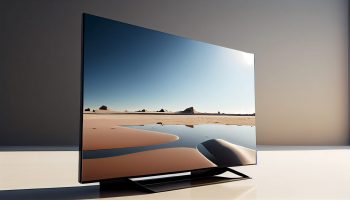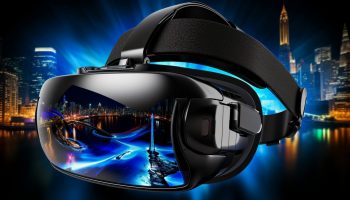Products
oLED Displays
oLED Advantages
OLED displays offer several advantages over traditional display technologies like LCD (Liquid Crystal Display), including:

Better Picture Quality:
OLED displays typically have higher contrast ratios and wider viewing angles compared to LCDs. Each pixel in an OLED display emits its own light, allowing for true black and vibrant colors without the need for a backlight.

Thinner and Lighter:
OLED displays can be made thinner and lighter because they don't require a separate backlight layer like LCDs. This makes OLED displays well-suited for thin and lightweight devices such as smartphones, tablets, and OLED TVs.

Flexible and Curved Designs:
OLED technology allows for flexible and even curved display designs. This flexibility opens up possibilities for innovative form factors and new types of devices, such as foldable smartphones and curved OLED TVs.

Faster Response Time:
OLED displays have faster response times compared to LCDs, resulting in smoother motion and reduced motion blur, which is particularly important for gaming and fast-paced video content.

Energy Efficiency:
OLED displays are more energy-efficient than traditional LCDs because they only consume power for the pixels that are emitting light. In contrast, LCDs require a constant backlight, even for displaying dark content, which can waste energy.

Wide Color Gamut:
OLED displays are capable of reproducing a wide range of colors, making them suitable for applications where color accuracy and vibrancy are important, such as professional photography and video editing.

Durability and Lifespan:
OLED displays have a longer lifespan compared to older display technologies like plasma displays, and when properly engineered, they can also be quite durable. However, OLED displays are susceptible to degradation over time, particularly in terms of brightness and color accuracy, which is a factor to consider for long-term use.
FLCOS Displays
FLCOS Key Features
FLCOS displays are often used in electronic viewfinders (EVFs) for digital cameras, head-mounted displays (HMDs) for virtual reality (VR) and augmented reality (AR) applications, and other projection systems. Here's how FLCOS displays work and some of their key features:

Reflective Technology
FLCOS displays use a reflective technology, meaning that they reflect ambient light rather than emit their own light like OLED or LCD displays. This makes them suitable for use in bright environments and outdoor settings where ambient light may be abundant.

Liquid Crystal Modulation
FLCOS displays use liquid crystal cells deposited on a silicon backplane. Each pixel consists of a liquid crystal cell on top of a reflective silicon surface. By applying voltage to the liquid crystal cells, the polarization of light passing through the liquid crystal layer can be modulated, controlling the amount of light that is reflected.

High Resolution
FLCOS displays can achieve high-resolution images due to the small size of the individual silicon-based microdisplay elements. This allows for sharp and detailed imagery, which is particularly important for applications such as digital cameras and VR/AR headsets where visual clarity is essential.

Color Reproduction
FLCOS displays can produce vibrant and accurate colors, making them suitable for applications where color fidelity is important. Color reproduction is achieved through the use of color filters or color sequential techniques, depending on the specific implementation of the FLCOS technology.

Compact Size
FLCOS displays are typically compact and lightweight, making them suitable for integration into portable devices such as digital cameras and VR/AR headsets. Their compact size also allows for the creation of sleek and ergonomic designs.

Low Power Consumption
FLCOS displays can be designed to consume relatively low power compared to other display technologies, making them suitable for battery-powered devices such as digital cameras and portable electronics. This is achieved through efficient use of the reflective technology and optimized driving circuitry.

Fast Response Time
FLCOS displays offer fast response times, which is important for reducing motion blur and maintaining a smooth viewing experience, particularly in VR/AR applications where rapid head movements are common.

Scalability
FLCOS technology is scalable, allowing for the creation of displays with various sizes and resolutions to meet the requirements of different applications, from compact EVFs in digital cameras to high-resolution HMDs in VR/AR systems.
Next Level Media Processors
Characteristics and Advancements
These processors are designed to deliver high performance, energy efficiency, and advanced features to support demanding multimedia applications across various devices and platforms. Here are some characteristics and advancements associated with next-level media processors:

High Performance
Next-level media processors are equipped with powerful CPU (Central Processing Unit) and GPU (Graphics Processing Unit) cores, as well as dedicated hardware accelerators for multimedia tasks. These processors can handle complex media processing tasks with high efficiency, enabling smooth playback of high-resolution videos, real-time video editing, and immersive gaming experiences.

Hardware Acceleration
Next-level media processors often incorporate specialized hardware blocks or accelerators for specific multimedia tasks, such as video decoding (e.g., H.264, H.265/HEVC, VP9), video encoding, image processing (e.g., resizing, filtering, color correction), and audio processing (e.g., decoding, mixing, spatial audio). Hardware acceleration improves performance and energy efficiency by offloading these tasks from the CPU and GPU.

AI and Machine Learning
Some next-level media processors integrate AI (Artificial Intelligence) and machine learning capabilities to enhance multimedia experiences. AI-based algorithms can be used for tasks such as content analysis (e.g., scene detection, object recognition), image enhancement (e.g., super-resolution, noise reduction), and personalized content recommendation.

Low Power Consumption
Energy efficiency is a key consideration for mobile and battery-powered devices. Next-level media processors are designed to achieve high performance while minimizing power consumption, enabling longer battery life and better thermal management. Advanced power management techniques, such as dynamic voltage and frequency scaling (DVFS) and adaptive clock gating, help optimize power efficiency.

Multimedia Standards Support
Next-level media processors support a wide range of multimedia standards and formats to ensure compatibility with various content sources and playback devices. These standards may include video codecs (e.g., H.264, H.265/HEVC, VP9), audio codecs (e.g., AAC, MP3, Dolby Atmos), image formats (e.g., JPEG, PNG, WebP), and streaming protocols (e.g., HLS, MPEG-DASH).

Connectivity
Next-level media processors feature advanced connectivity options to facilitate seamless integration with external devices and networks. These may include high-speed interfaces such as USB, PCIe, HDMI, DisplayPort, and Ethernet, as well as wireless technologies such as Wi-Fi, Bluetooth, and NFC (Near Field Communication).

Security
Security is a critical consideration for multimedia processors, especially for handling sensitive content such as digital rights management (DRM)-protected media. Next-level media processors incorporate hardware-based security features, such as secure boot, secure key storage, and hardware-based DRM support, to protect against piracy, tampering, and unauthorized access.
